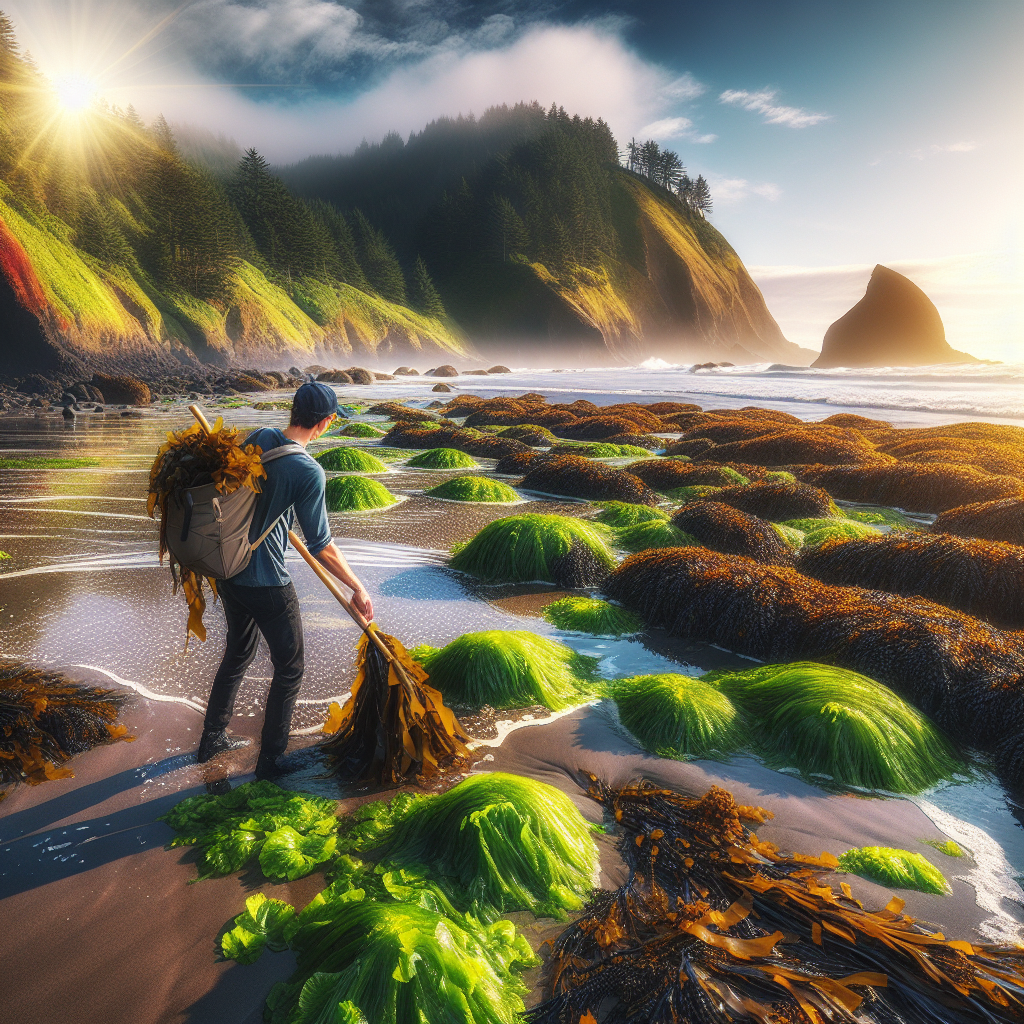The Magic of Seaweed Foraging on the Oregon Coast – A Beginner’s Guide
Weaving through towering Douglas fir and winding along lonely beaches on the rugged Oregon coast, one encounters the magic of the ocean’s bounty: seaweed, one of Mother Nature’s most versatile gifts. Known for its rich nutrients, savory taste, and even sustainable potential, seaweed foraging has found its niche among locals and visitors alike, growing increasingly popular in recent years.
Planning Your Seaweed Foraging Adventure First things first, foraging for seaweed isn’t just a walk down the coastline. One must be prepared for this unique adventure. Check the tide tables before heading out; low tide, preferably minus tide, is the ultimate time for seaweed foraging. Keep in mind, though, coastal weather can fluctuate rapidly, especially in the afternoons. It’s a wise idea to wear layers and bring water-resistant clothing.

The Tools of the Trade A good pair of water shoes, a sturdy bucket, and kitchen shears are all valuable tools for any seaweed forager. The rocks can be slippery, and coastal critters can find their way into shoes, so footwear that’s easy to rinse and dry is recommended. Shears will assist in cutting the seaweed without harming the plant. Remember, the goal is to harvest sustainably, allowing the seaweed to continue its growth cycle after the foraging.
Must Visit Spots for Seaweed Foraging For an unmatched seaweed foraging experience, head towards Oswald West State Park or Cape Blanco Coast Guard Station. Both locations offer a variety of edible seaweeds such as kelp, sea lettuce, and the incomparable winged kelp. But beware of the tourist crowds during summer weekends; we locals prefer early mornings or weekdays for quiet beach combing sessions.
Identifying Edible Seaweeds This is perhaps the most intimidating part for beginners. After all, not all that glitters is gold. Similarly, not all seaweed found along our coast is edible or tasty. Among the favorite edibles are Sea Palm, Bull Kelp, and Wakame. Sea Palm resembles miniature palm trees and is often found attached to rocks in the intertidal zone. Bull Kelp, quintessential to Oregon’s coast, can be identified by its long, slender stem and bulbous top. Wakame, harder to find, is characterized by its dark green color and tender, sweet flavor.
Responsibility While Foraging Oregon’s coast is a shared resource, a delicate ecosystem, so respect is crucial while foraging. Apart from the general etiquette of leaving only footprints, specific rules and regulations must be adhered to. The Department of Fish and Wildlife limits harvesting to 10 pounds per person, per day, for personal use. Always remember to cut, not pull, the seaweed to promote regrowth.
Processing Your Seaweed Harvest After a satisfying day filled with the crash of waves and the salty sea breeze, you return home with the day’s harvest. But, your work is not over. Seaweed must be promptly rinsed and either dried in the sunshine or baked in the oven on a low heat setting. Once processed, it has a remarkably long shelf-life and can be used in soups, salads, or simply as a nutritious snack.
Parting Words of Advice Just as every beautiful sunrise promises a new beginning, so does your seaweed foraging journey. Start small, learn as you journey, and relish in the rewards nature offers. Be aware of your environment; heed weather warnings, respect local regulations, and keep an eye out for local wildlife.
Seaweed foraging along the Oregon coast is an experience steeped in nature’s simplicity, offering a profound connection with our surroundings, nourishment from the sea’s pantry, and an exercise in sustainable living. So venture out, the coast is waiting to share its treasures. And remember, every step along the way enhances our love affair with Oregon. Welcome to seaweed foraging, your new hobby awaits!
